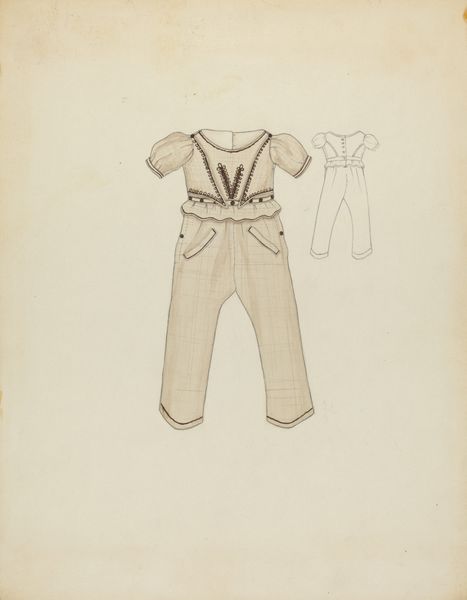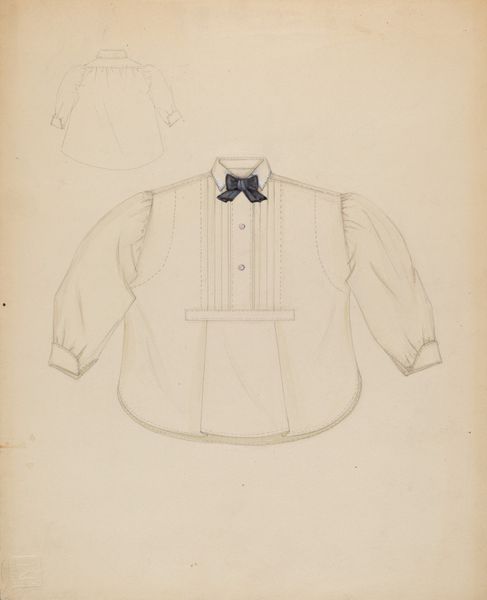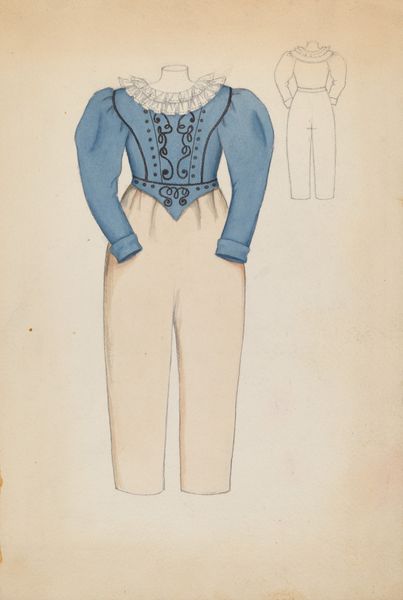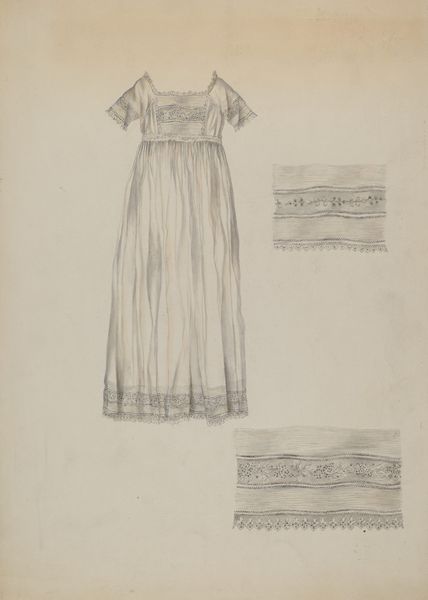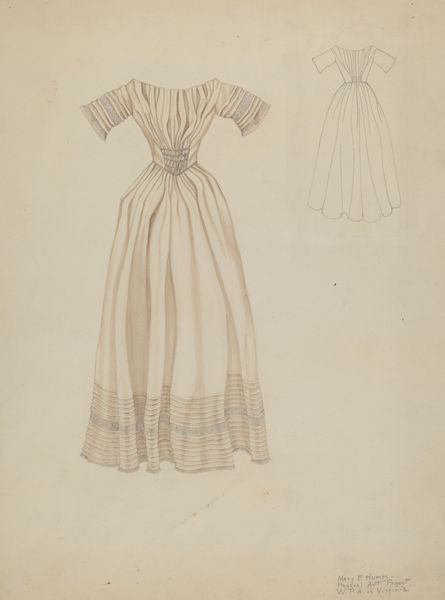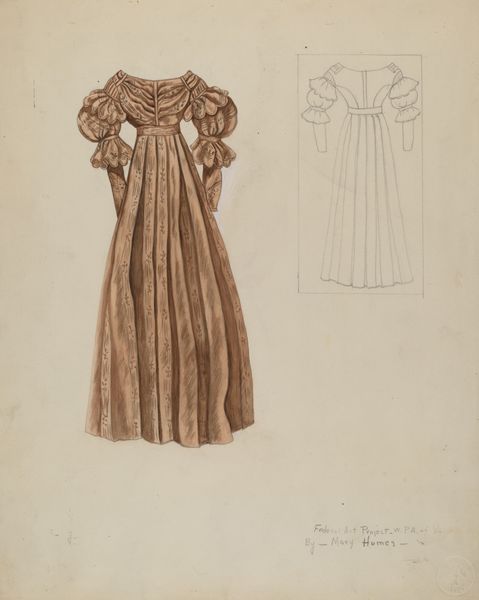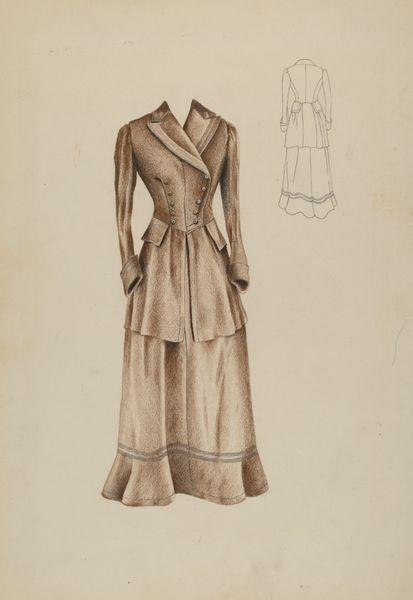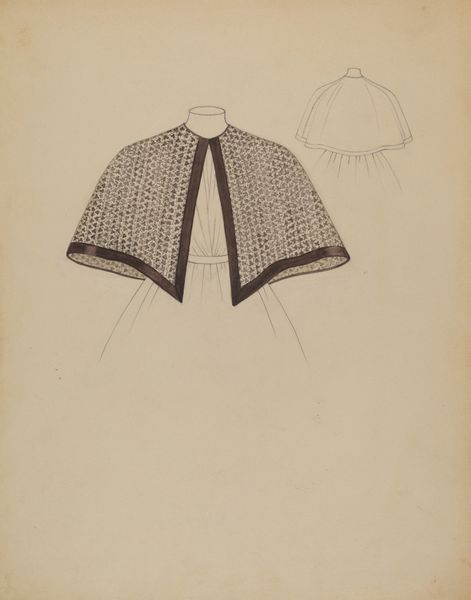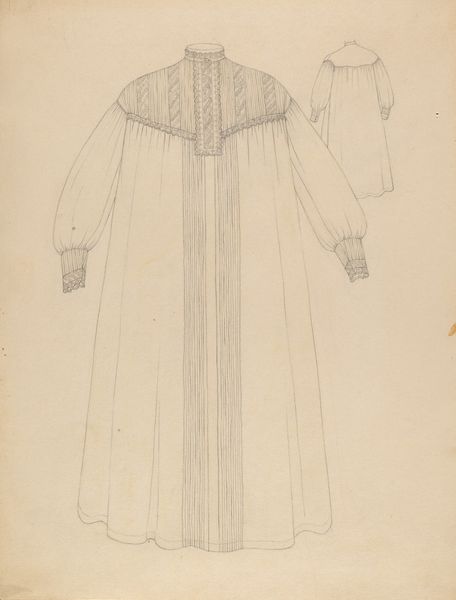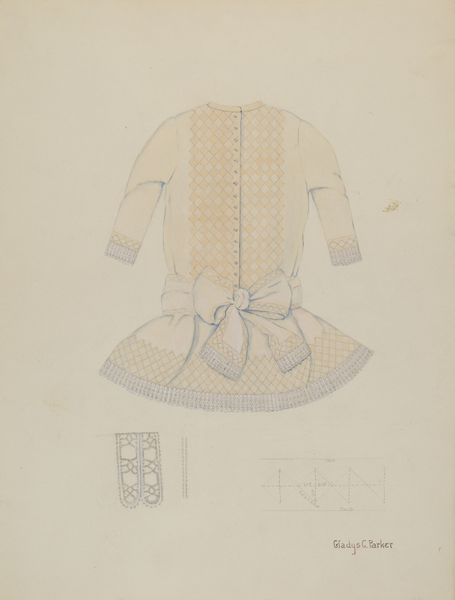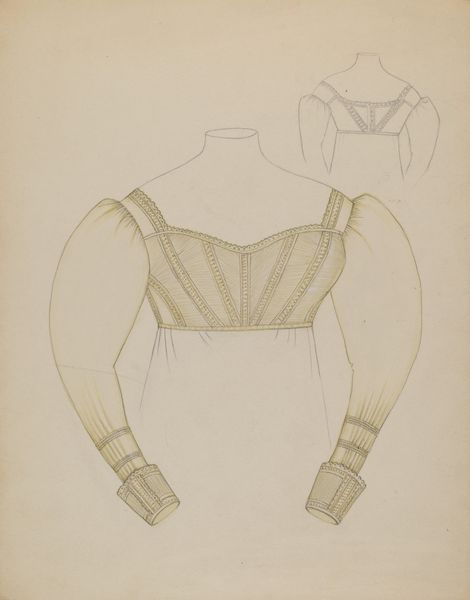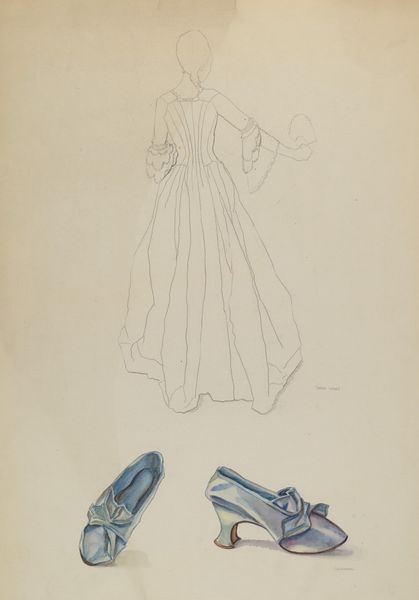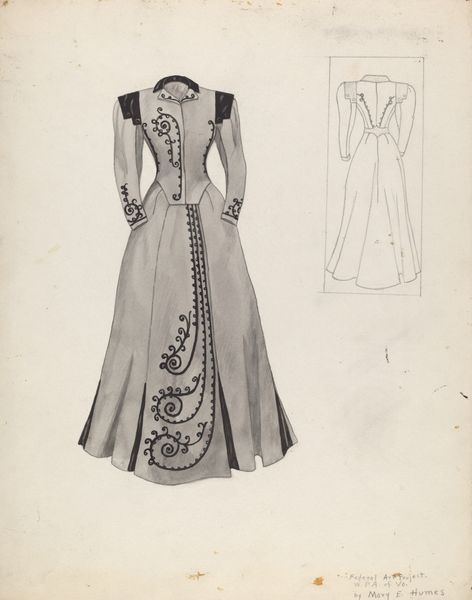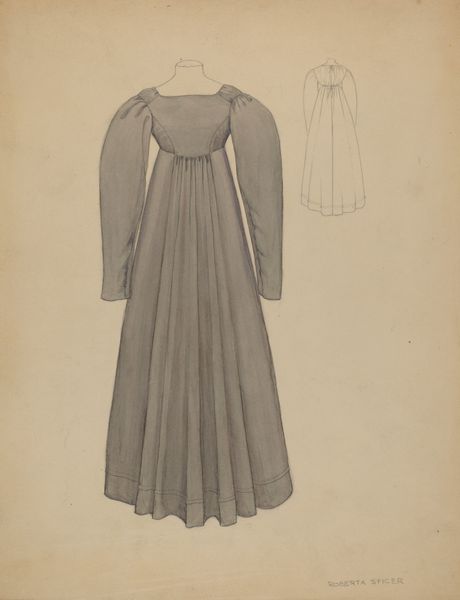
drawing, paper, pencil
#
portrait
#
drawing
#
paper
#
historical fashion
#
pencil
#
academic-art
Dimensions: overall: 28.7 x 22.9 cm (11 5/16 x 9 in.)
Copyright: National Gallery of Art: CC0 1.0
Editor: Here we have "Boy's Suit," a pencil drawing on paper from around 1936 by Jean Peszel. The delicate lines and the muted tones give it a really ephemeral feel. What strikes me is the balance between the detail on the top and the simplicity of the trousers. What do you see in this piece, considered purely as an exercise in form and composition? Curator: Formally, the drawing presents a study in contrasts. The artist juxtaposes the almost severe geometry of the trousers—the grid pattern and the sharp angles of the pockets—with the softer, curvilinear forms of the blouse. Notice the puffed sleeves, the rounded neckline, and the decorative loops and scallops that embellish the bodice. How do these opposing elements interact, in your opinion? Editor: I see the top half as very ornate and playful. The lines seem lighter somehow, less assertive. While the grid pattern in the trousers create a firm foundation, grounding the whimsical quality of the blouse. The contrast really emphasizes the design of the top. Curator: Precisely. And it’s through this contrast, this tension between the geometric and the organic, the simple and the ornate, that the artist achieves a certain dynamism. Observe how the secondary sketch serves to mirror the primary. Note how it reiterates the contrast from a different point. This enhances the drawing's exploration of form and balance. Editor: So, by looking closely at these design choices, we appreciate the visual structure even without thinking about what it’s supposed to be *for*. Curator: Precisely. The artist presents an idea through considered organization, rather than explicit representation. These components contribute to a sophisticated exploration of shape, line, and texture, regardless of historical significance. Editor: I learned that closely examining formal choices allows us to understand the artist's ideas on a purely visual level. Curator: Indeed. This detailed observation can allow for a greater understanding, enriching the viewer's relationship to art through its fundamental language.
Comments
No comments
Be the first to comment and join the conversation on the ultimate creative platform.
